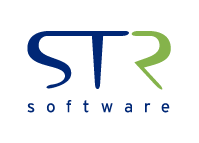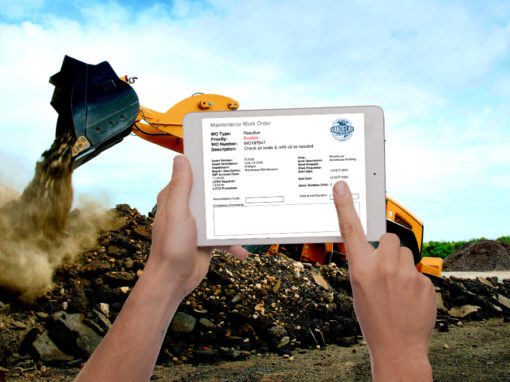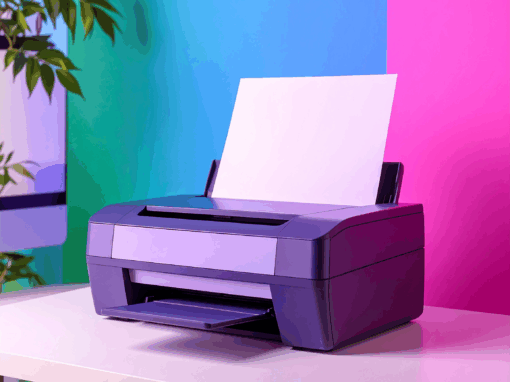Case Study Snapshot
One of the fastest-growing mining companies in the world elected to migrate from Oracle EBS (on-premises) to Oracle Cloud ERP, which included migrating their maintenance initiatives from Oracle eAM to Oracle Fusion Cloud Maintenance. With Oracle eAM, the organization relied on the ability of AventX to automatically collect URL and File attachments, collate the work order, and, finally, deliver the work packet to a selected printer.
In this shift to Oracle Cloud Maintenance, staff quickly identified many of the same challenges that were present in the “old” Oracle eAM product—attachment gathering, packet creation, and printing. Additionally, new challenges with the cloud-based solution arose, particularly connecting a SaaS solution to on-premises printers (security) and the ability to print large batches of work orders (scalability).
With AventX for Oracle Cloud Maintenance, the organization was able to successfully migrate to Oracle Cloud Maintenance while maintaining the feature parity they desired with their on-premises AventX implementation, while also overcoming these new security and scalability challenges.
The Results
Successfully Print 800 to 1,000 Work Orders per Day (with All Required Attachments)
Reduced Planner Time to Generate Work Packets
Increased Planner Availability to Focus on Critical Maintenance Initiatives
Eliminated Work Orders Printed to Incorrect & Inaccessible Printers

The Challenge
Time Consuming, Not Scalable, Not Secure
Work Packet Assembly
In shifting to the cloud, the gold and phosphate mining company discovered that printing physical, paper work order reports remained a critical requirement for their maintenance team. Moreover, these printed work orders needed to include various attachments located throughout the Oracle Cloud Maintenance module.
In other words, the maintenance operations team needed an easy and automated method for technicians to obtain all the information they need to perform their work—work order + attachments (text attachments, Excel checklists, drawings, images, and more).
After evaluating Oracle Cloud Maintenance native functionality, the team was left with the ability to only create and print work orders with attachments if the file is included as a PDF at the Work Order Header or Work Order Operation. Attachments that are URLs or other file types are excluded, as are Attachments at the Asset, Work Definition, and other locations.
To generate a single work packet, all the other critical attachments, each document must be opened individually using its native file application, printed, then collected and collated.
Another option the organization considered to stick with native Oracle functionality, was for the operations team to convert thousands of documents stored in SharePoint (i.e., URL Attachments for Oracle eAM) and their Network from the original native file format (Word, Excel, CAD, etc.) to PDF. Once converted, the attachments would need to be uploaded. Not only would this have been a time-consuming task, but the files would also become static, requiring additional time and resources to update and re-insert into Oracle Cloud Maintenance.
Additionally, the client had requirements to archive copies of each work order packet delivered to technicians for auditing/compliance purposes. With Oracle Maintenance Cloud unable to deliver a full work packet in a single click, after manually creating the work packet, the client then needed to create a digital copy of and catalog the work packet to create the required electronic record of what was provided to the technician.
Work Order Scalability
While Oracle Fusion Cloud Maintenance provides multiple options for generating work orders, each is accompanied by challenges that slow down the maintenance process. Because of these deficiencies, the client struggled with generating and printing their daily work order volumes.
The first process allowed the organization to print one (1) work order at a time. With a volume exceeding 800 – 1,000 work packets daily, printing one (1) at a time would come at a significant cost (time) to the maintenance operations team.
A second option provided the ability to batch process work orders; however, the work order details selection screen did not enable a printer to be chosen. This meant that the batch would need to be retrieved from Oracle ESS Processes and manually printed (and it would, again, include only a limited set of PDF attachments).
The third printing option, was a near reverse of the second, enabling the maintenance team to select a printer, but removing the ability to include attachments. When selecting a printer, native Oracle does not distinguish between business units, making every printer available to every user, often causing users to select a printer that was offline or in another location in the country.
Additionally, both the second and third options only offered users a limited set of parameters when defining the batch of work orders they needed to print for technicians. This limited set of options forced users to select a range of work orders, causing the organization to grossly overprint work orders that were unnecessary to transition to the maintenance technicians. Another challenge posed by this batch selection (“range only”) was that the client has business units using the same Oracle Cloud Maintenance pod. These business units are dispersed throughout Saudi Arabia, which meant that a batch (selected range) of work orders often included work assigned to another business unit in a disparate location.
Printing Security & Connectivity
When configuring Oracle Maintenance Cloud, the client discovered that connecting a SaaS application to their network of disparate printers required a significant amount of time and resources to configure and maintain—involving Linux/Windows admins, Oracle Fusion Cloud admins, and the network security teams.
More importantly, to enable IPP printing, it required potentially risky changes to their inbound network connections and firewall rules. And the print server and/or individual printers would require SSL configuration and management.
While testing IPP printing, the team found that no print status was provided to end users. With remote printers and no print feedback, maintenance operations had no way to identify if the print jobs had successfully been printed.
In addition to these security issues, every time a printer was added or a configuration was changed, it needed all three (3) teams, working in unison, to update the configurations.
The organization could only create and print work orders with attachments…
…if the attachment file was included as a PDF…
…at the Work Order Header or Work Order Operation.

The Solution
Cost-Effective Automated Work Order Creation & Distribution
By adopting AventX, a familiar solution to the mining company, the maintenance team realized their goal of an easy and automated method for planners to deliver all the information to technicians so they can perform their critical maintenance initiatives successfully and safely.
STR Software’s solution navigates the challenges of adopting Oracle Maintenance Cloud by simplifying the process of printing work orders from an Oracle SaaS pod.
Automated Work Packet Assembly
AventX solved the challenges in creating work packets by extending the existing functionality of Oracle Cloud Maintenance to not only print the work order but also to gather, collate, and print the necessary attachments. Initiated from the Oracle Cloud Maintenance Schedule New Process screen, AventX extracts both File and URL Attachments from Oracle Cloud Maintenance, combines them into a single file, and prints them to the selected printer.
With the ability to extract any file type from any entity—Work Order Header, Work Order Operation, Asset Work Definition, etc. (plus the ability to create custom, robust SQL queries to extract nearly any file from other locations), the client was able to migrate existing SharePoint URL and File Attachments in their native formats directly from their Oracle eAM implementation to Oracle Cloud Maintenance. Doing so eliminated the need to convert all their Word, Excel, CAD, image, and other file types to PDF.
Additionally, when printing a work order and gathering the attachments, the AventX for Oracle Cloud Maintenance solution is configured to automatically resize documents to the preferred paper size (i.e., A4), add dynamic page stamps to every page of a printed work packet (page number, work order title, etc.), and insert an error page when an attachment could not be extracted.
Scalable Work Order Printing
The AventX solution improves the client’s ability to print batch work orders in batches by extending Oracle’s native Schedule New Process functionality. An enhanced Schedule New Process form enables the mining company to use additional standard and custom DFF fields for selecting which work orders to print—including, Work Center, Work Area, Asset Area, and more.
This means the maintenance operations team can select the required range, but also narrow the results to only the relevant work orders for the day or week. Eliminating the overprinting of unnecessary, unneeded, and irrelevant work orders to the batch run.
Notably, the AventX extension enables users to include attachments and select a printer in the Process parameters, a feature not available with Oracle Cloud Maintenance native functionality.
A final benefit the team realized is the ability to email work orders from the Oracle interface when printing is not available or needed.
Secure On-Premises Print Connectivity
AventX solved the client’s critical security and printer management challenges by acting as the on-premises printer server. Additionally, AventX acts as the admin and end-user interface, for application configuration for all the client’s Oracle Fusion printing needs. It also enables end users to view the status of their printed work orders and acts as a repository (for compliance/auditing) of each work order that was printed and delivered to a maintenance technician.
Additionally, AventX provides the multi-commodity mining company with unique configuration settings/rules for different Oracle Cloud Business Units, enabling each BU to use different methods for creating and distributing work packets to suit their needs. Because administrators can manage individual needs and printer access for each business unit, AventX has eliminated the ability of users to print work orders to an incorrect printer.




![Rollup of Product Updates [Summer 2025; v25.3]](https://www.strsoftware.com/wp-content/uploads/2023/02/Feature_Image_ProductUpdate_Wave-510x382.png)
